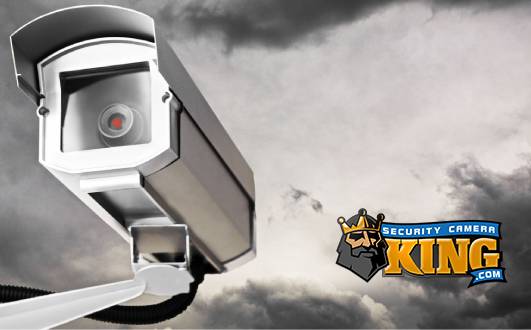What Are False Alerts in CCTV?
Joe from SCK here, and today we aim to answer the question “what are false alerts in CCTV?” and further “how do we get rid of false alerts?”
To understand what false alerts are, we first need to understand what an alert or alarm is in the first place. You can set all sorts of alerts on your CCTV system to tell you when various types of events occur. Commonly this is used with features like motion detection and the more advanced features which we will get into below. Ideally, when a camera detects motion, this causes an alert that triggers the DVR or NVR to record data on the appropriate channel for such a trigger. Motion detection works great much of the time, although it may take some trial and error during setup. It’s important to have alert and logging systems for the various types of on-site events that can occur. Alerts are great because even from a completely remote location, you would be able to know if a motion event was triggered causing alerts on the recorder to translate to notifications in your app.
False alerts, however, are possible and can become a nuisance if not dealt with early on. This can be caused by an array of circumstances, but almost always has something to do with the subjective nature of the scene being looked at. The types of things that could potentially interfere with false alerts could include things such as erratic lighting, high-intensity lighting, strobing or specifically angled lighting, moving plants such as trees and bushes, swaying powerlines, which can have an effect on the motion settings resulting in the trigger activating at times you would prefer it not to. This causes you to get alerts, when not needed- and this is one kind of alert we would call a false alert.
Adjusting settings is worth a shot to attempt to compensate for such interference, but in some situations, there may not be much you can do to control many of the external factors which would cause something like basic motion detection to behave inaccurately. For example, consider a front door of a busy grocery store: There is going to be motion in this area pretty much 100% of the time. Motion alerts, while accurate and not triggering due to strange lighting or bad mounting angles, won’t be as useful as you’ll generate endless alerts. Other situations that fall into this category could be a customer walking through the main lobby, cars moving through a parking lot, or even flashing lights on machines. all three of these are normal events that might trigger a detector to go off. Today we’re going to briefly cover a few ways to reduce false alerts so that you are notified, and the system recorded without need as little as possible. Many of these methods have their own setup or info videos as part of this series, and we’ll include any relevant links in the description.
- How Can I reduce False alerts? I – Motion Settings
The first thing you can do to reduce motion false alerts is to Adjust Motion Settings- Trial and error can determine the best settings for Sensitivity, threshold, and anti-dither on your system. You can also change what times of the day, motion detection even operates. Check out our article and video on “how motion detection works” to learn more about these settings. - How Can I reduce False alerts? II – Smart Motion Detection
Speaking of motion detection, have you heard of smart Motion detection -or SMD? This new AI-enhanced motion detection actively reduces false alerts by eliminating any target from the detection range that isn’t identified by the AI chip as a person or vehicle. Check out our SMD video and article for more info. - How Can I reduce False alerts? III – IVS Rules
You can use IVS rules such as tripwire and intrusion box. These rules are far more specific than motion detection in terms of the trigger requirements, new AI-IVS features allow you to eliminate targets that aren’t specifically people or vehicles for even deeper false alert reduction, similar to SMD. - How Can I reduce False alerts? IV Infrared Beams
We now have an amazing new technology to dramatically reduce or even eliminate false alerts. These Infrared Beams With Security Cameras can be used to trigger cameras to record and your recorder to send notifications when the beams are physically broken. Compared to digital tripwires like IVS, these are far more effective.
Thanks for joining us today as we talked a bit about some of the ways to reduce false alerts. We have videos out, or coming soon on each of the technologies mentioned there today, so for more a detailed look- check out the links in the description. If you enjoyed the article, video or found it helpful, don’t forget to toss us a like and hit subscribe for more content. Until next time, stay safe!
Related: Infrared Beams With Security Cameras
Related: Best Active Deterrence Camera Set up
Related: How Does CCTV Motion Detection Work
Related: How to terminate and test Ethernet Cable
Related: What’s the difference between DVR and NVR?
Related: What’s the difference between H264 and H265?
Related: IP PTZ Security Cameras – All There is to Know
Related: Resolution, and why does it matter?
Related: What are active deterrence cameras?
Find Us On: Facebook | Twitter | YouTube












